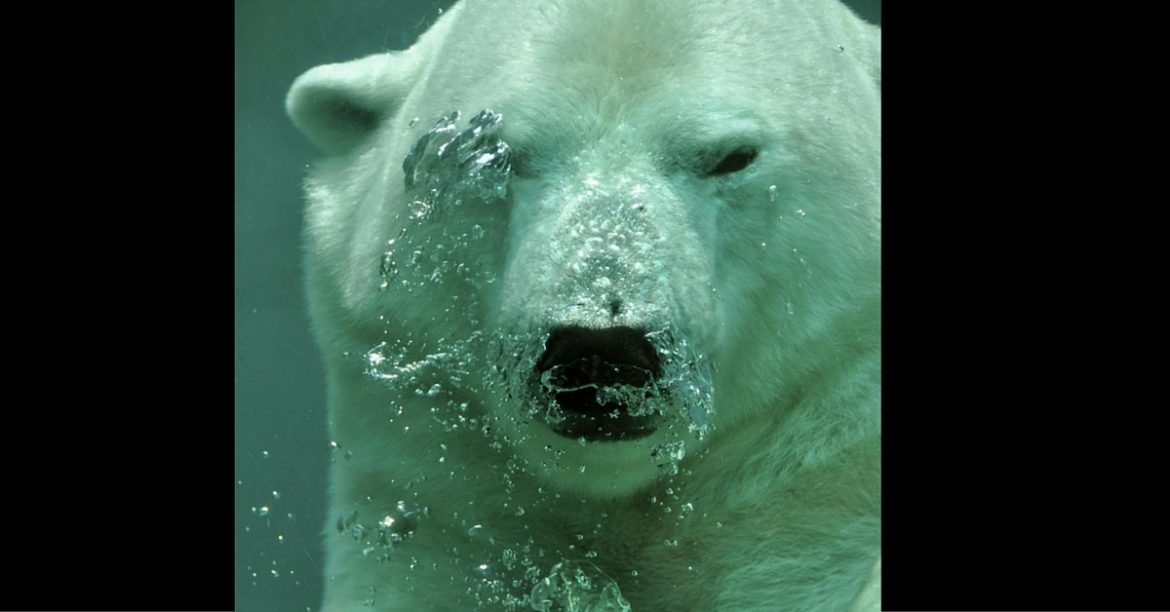With the ever increasing climate changes, specifically global warming, many living species are adversely affected, from plants and organisms to fish and animals – even humans. And one animal that is on the front line of global warming is the polar bear.
Scientists have tried to count the polar bear population. They are hard to find as their natural habitat is in very remote areas, so a conclusive count has proven to be challenging. However, it is estimated that there are between 22,000 to 40,000 worldwide, with fifty percent of them living in Canada and the remainder in and around the Artic and North Pole. The ICUN (International Union for Conservation of Nature) reported in 2014 that of the 19 populations of polar bears, three are declining, six are stable, one is increasing and nine have insufficient data.
Although most polar bears are born on land, they spend most of their time on the sea ice. Their scientific name means “maritime bear,” and derives from this fact. Polar bears hunt their preferred food of seals from the edge of sea ice, often living off fat reserves when no sea ice is present. Because of their dependence on the sea ice, polar bears are classified as marine mammals. If the green house effect shortens the winter months, the bears will have less time to eat which will prevent them from storing their fat content to last them through the spring, summer and fall months. They depend on this feeding and storage cycle to survive once the harsh winter months begin.
The primary source of food for polar bears are, seals. In the summer months the polar bears will often swim the waters or just hang out on the shore looking for them. But as the harsh winter weather conditions set in, the polar bear adapts and becomes more resourceful by walking on the ice floes looking for holes or cracks. They know that the seals are swimming in the waters below and that they have to eventually pop up to take a breath of air. Once the seal comes up through the hole, its dinnertime.
Unlike their cousins, the brown and black bears, polar bears do not hibernate because there has always been a plentiful source of seals. The only ones that do den are pregnant females so she can feed her cubs with her milk and protect them from the harsh elements. Cubs hang around mama for around two years so then can learn from her how to survive in winter.
Aside from climate change affecting their environment, it also has been found that man-made pollution of the oceans is also affecting the polar bear’s health. In recent studies, high levels of mercury have been found in polar bear bodies. Polluting the waterways, mercury works its way through the food chain, first ingested by fish, then seals and eventually bears.
You would think that the polar bear, living in the frigid, barren tundra could survive anything. And on his own, the polar bear can. But with the intrusion of man polluting the earth’s environment, this hearty animal species is in danger.
 Food
Food Farmers
Farmers Sustainable Living
Sustainable Living Living Planet
Living Planet News
News